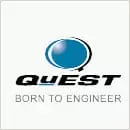Effective Engine Fleet Management is one of the main driving forces for cost effective operation of any airliners. Operational readiness of the fleet determines the quantum of business in the highly competitive commercial airline segments. On an average, airliners need to spend approximately 10% to 15% of the operation costs into maintenance of the fleet, of which, 40% are spent on engine maintenance alone. Of this, 60%-70% accounts for material cost, 20%-30% labor cost, and 10%-20% repair cost.
Engines need to undergo Predictive and Preventive maintenance, based on the life limiting factors (material composition limitations for operating at high temperatures and rotating speeds, component wear and tear, deterioration, etc.,) of its components within an engine and the external factors (foreign bodies ingestion into engines, indelicate flight profile operation) that affect or deteriorate the planned or predicted life cycle of the engines performances. Also, maintenance activities are carried out to meet regulatory requirements.
Off-Wing Predictive Maintenance:: Major factors that drive this are: Life-Limiting Parts’ Replacement and Engine Refurbishment.
On-Wing Preventive Maintenance : This includes Progressive Maintenance and Engine Condition Monitoring.
While MRO (Maintenance, Repair and Overhaul) activities are seen as a costly affair and to be done away with, engine shop visits, and services such as, Technical Fleet Management, Computer Aided Software supports, Data Analytics services have become a greater need for effective Engine Fleet Management.
QuEST’s long standing and successful work for Aero Engine OEMs together with its After Market Service capabilities can be leveraged for
1. Engine Health Monitoring
2. Maintenance scheduling and planning
3. Technical solutions for On-condition maintenance
4. Maintenance Manual Enrichments
5. Repair Solutions
6. Service Data Management
7. Cost Reduction
For more info about our After Market Service, contact us.
